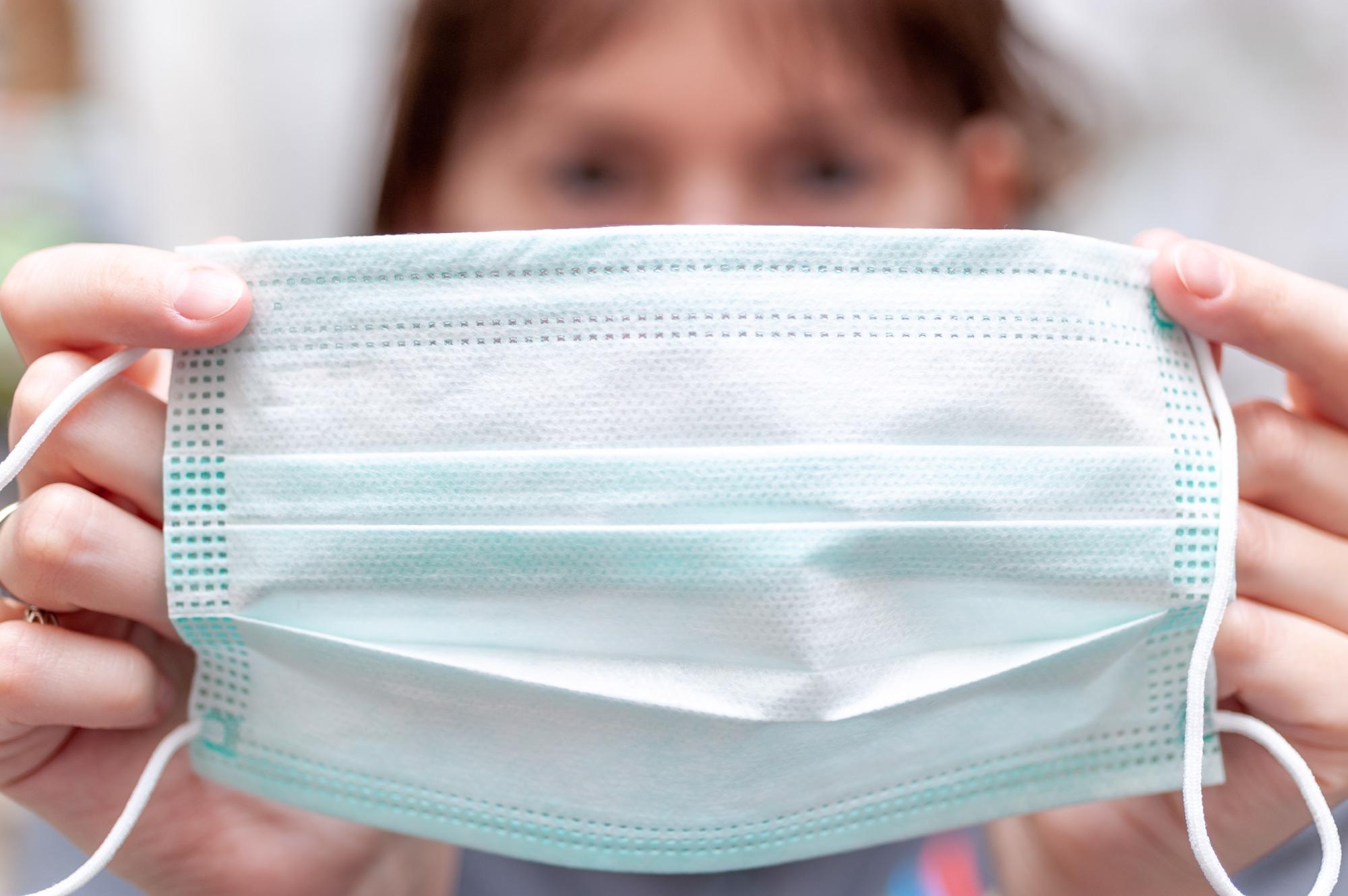Home » Health News »
Variolation – Face masks might reduce COVID-19 severity
In a recent study published in the Journal of the Royal Society Interface, researchers developed an epidemiological model to demonstrate that mask-induced variolation causes milder severe acute respiratory syndrome coronavirus 2 (SARS-CoV-2) infection.
There is enough data to prove that mandating face mask use substantially and effectively reduced SARS-CoV-2 transmission throughout the coronavirus disease 2019 (COVID-19) pandemic. However, a study published in 2020 by Gandhi & Rutherford suggested that the presence of face masks tended to reduce the infecting viral inoculum. Even if masks fail to completely prevent SARS-CoV-2 transmission, wearing face masks could still help reduce disease severity.
Gandhi and Rutherford referred to SARS-CoV-2 transmission through small inocula that penetrated masks as variolation. Masks filter droplets containing virus particles and thus could reduce viral inocula. Syrian hamsters shielded by a surgical mask partition showed much less severe COVID-19 symptoms, indicating how masks could reduce the severity. Likewise, studies have found antibodies to SARS-CoV-2 in individuals five months after a mild infection, thus showing the acquisition of immunity post mild infection that is enough to protect against reinfection.
 Study: Face masking and COVID-19: potential effects of variolation on transmission dynamics. Image Credit: Mykola Tys / Shutterstock
Study: Face masking and COVID-19: potential effects of variolation on transmission dynamics. Image Credit: Mykola Tys / Shutterstock
About the study
In the present study, researchers investigated whether face masking promoted SARS-CoV-2 variolation and explored its potential benefits using a mathematical model. The study model was developed by expanding the standard susceptible-infectious-removed (SIR) model.
They derived analytical inferences concerning the potential for masking to cause a proportion of infections to be mild, diminishing the probability of SARS-CoV-2 infection upon contact and altering the infectious period.
The model parameter, probability of mild infection (m), could be shorter and less transmissible. Three distinctive effects contributed to the overall effectiveness of mask-induced variolation- m, reducing transmission rate and shortening SARS-CoV-2 infectious periods. Additionally, the researchers assumed that the duration of immunity decay was the same after mild or severe infections.
Other model parameters included the relative transmissibility of mild infections (βm/βs) and the relative length of mild infections (γs/γm). The transmission rates of mild and severe infections (βm, βs) were independent of their probability of occurrence (m, 1−m).
All the study parameters influenced initial epidemic doubling time (T2), the peak prevalence of severe infections (Is), the attack rate for severe infections (Zs), and the equilibrium prevalence of severe infections. It is noteworthy that Is refers to several individuals who continue to contribute to transmission dynamics but suffer from a severe disease that will need substantial healthcare.
Furthermore, the researchers showed epidemiological risk metrics as a function of m corresponding to the original SARS-CoV-2 wild-type (WT) strain, and the Alpha, Delta, and Omicron variants. The estimated basic reproduction number (R0) for WT, Alpha, Delta, and Omicron was set at 3, 4.5, 6.75, and 28.4, respectively.
Study findings
Assuming face masking influenced the probability of a mild infection, more effective masking strongly affected SARS-CoV-2 transmission, thus reducing R0 and substantially lengthening T2, especially for less-transmissible variants.
Accordingly, the initial growth rate (r) of the epidemic was observed to be strongly dependent on m and was more sensitive to m if the variant was more transmissible. Additionally, variolation affected the IS, with the effect being substantially greater for more transmissible SARS-CoV-2 variants.
As the value of m increased from 0 to 1, T2 increased from 5.1 to 65 days, 2.9 to 11 days, 1.8 to 5.0 days, and 0.37 to 0.79 days for WT, Alpha, Delta, and Omicron, respectively. The risk measures related to severe infections declined substantially with m since the severe illness was eliminated when m approached a value of one, i.e., perfect variolation.
The expected number of severe cases during the initial wave of infections was also strongly dependent on m; however, not sensitive to transmissibility over the range of R0 observed for SARS-CoV-2 variants. Also, the equilibrium prevalence of severe cases declined with m. Furthermore, if R0∼β/γ, the effects of greater transmissibility of mild infections and longer infectious periods of mild cases were similar.
Conclusions
The study highlighted that the role of face masks as a tool for reducing the COVID-19 burden is under-appreciated. Clearly, a better understanding of the effectiveness of masking in promoting variolation could be of great value. It implies that more experimental data is needed to quantify the magnitudes of the effects that induce variolation from masking. It would also help expand the current study findings and make quantitative inferences that could usefully inform policy decisions.
A variolation strategy might contribute to COVID-19 mitigation in cases where vaccination is difficult and breakthrough infections continue in vaccinated populations.
Overall, increasing the effectiveness of mask-induced variolation would greatly reduce SARS-CoV-2 transmission and reduce the magnitude of the epidemic peak by reducing the number of severe cases in the initial wave and at equilibrium.
- Face masking and COVID-19: potential effects of variolation on transmission dynamics, Levine Zachary and Earn David J. D., J. R. Soc. Interface 2022, DOI: https://doi.org/10.1098/rsif.2021.0781, https://royalsocietypublishing.org/doi/10.1098/rsif.2021.0781
Posted in: Medical Research News | Disease/Infection News | Healthcare News
Tags: Antibodies, Coronavirus, Coronavirus Disease COVID-19, Healthcare, immunity, Omicron, Pandemic, Reproduction, Respiratory, SARS, SARS-CoV-2, Severe Acute Respiratory, Severe Acute Respiratory Syndrome, Syndrome, Virus

Written by
Neha Mathur
Neha is a digital marketing professional based in Gurugram, India. She has a Master’s degree from the University of Rajasthan with a specialization in Biotechnology in 2008. She has experience in pre-clinical research as part of her research project in The Department of Toxicology at the prestigious Central Drug Research Institute (CDRI), Lucknow, India. She also holds a certification in C++ programming.
Source: Read Full Article



